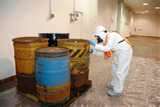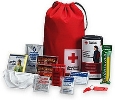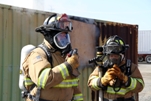By Scott Margolin
There is simply no substitute for a properly conducted, objectively administered, blind wear test.
By William McGlocklin, Dave Rath, Chuck Roberts
The firm's initiatives continue to produce performance improvements as the organization approaches its goal of zero accidents.

By Glenn D. Trout
Pictograms are just one of the reasons employers should consider training employees on GHS formats well before the December 2013 deadline.

By Karen D. Hamel
Don't rely on shelved response plans in an actual emergency.

By Jason Wright
In addition to cost savings, an advantage to choosing rental over purchasing gas detectors is that it enables more accurate budgeting for projects.
By Alex Gaggin
Keep in mind, many industrial disasters of the past have resulted from a false sense of security in SOPs and fail-safes.

By Kate Woldhuis
With an average of 250 fire calls each year, quick response is vital to keep fires from spreading, says Brad Hukreide, fire chief at the Lewiston, Idaho, paper mill.

By Nick Tallos
The first few seconds are crucial. The chemical needs to be washed off by means of a 15-minute drenching as soon as possible to minimize damage.
By Robert Pater
To move to high-level safety it's necessary to perceive and then neutralize ever-smaller risks, like adjusting the fine-tuning controls on a monitor.
By
If you, the leader, are unable to describe in vivid detail what excellence looks like and your strategy to achieve it, don't expect others can.
By Jerry Laws
Worker's compensation covers less than 25 percent of the medical and indirect costs of occupational injuries and illnesses, according to a recent study.